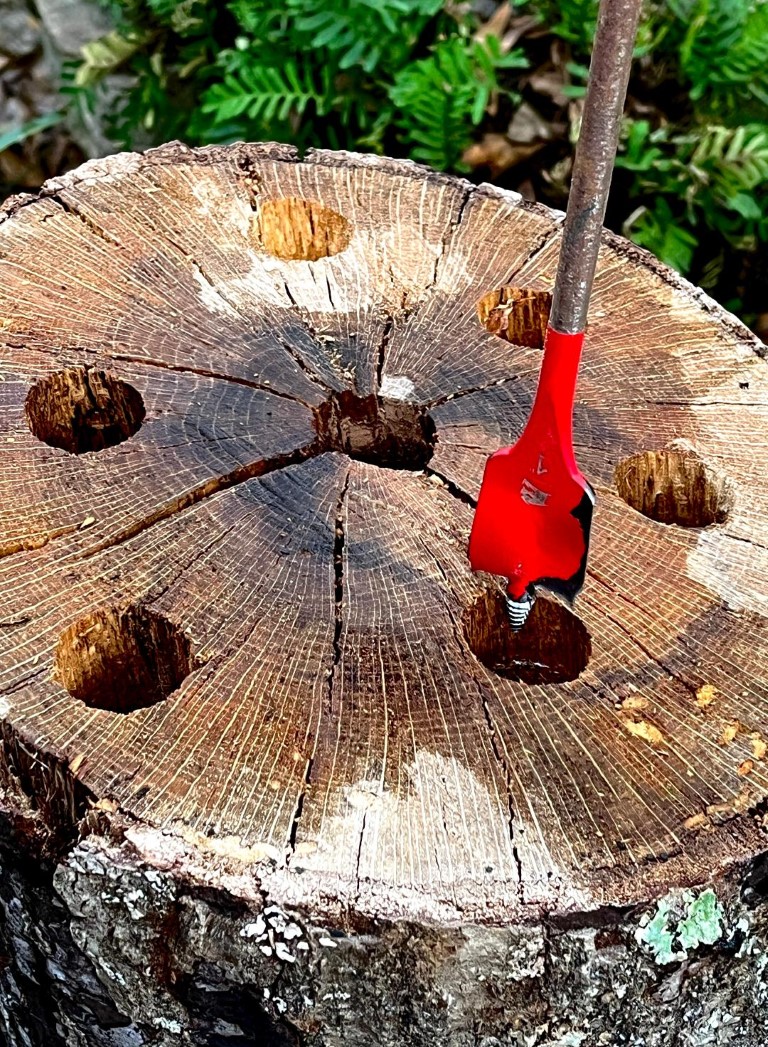Sumac is an astonishing plant that needs more looks
Published 8:21 pm Wednesday, May 31, 2023

- The drought tolerant, exotic-looking small sumac flower has multiple trunks and large, mimosa-like leaves.
By Felder Rushing
Garden Columnist
One of my favorite native plants for the landscape is seriously overlooked by Mississippi gardeners partly because it is so ubiquitous in the countryside, and spreads a bit. Yet it is widely used in all the finest English and European gardens.
It works for me because of my gardening style, which some would describe as somewhat unsuitable for tidier neighborhoods. The small, walled-in urban plot, barely wide enough to park both my truck and my Jeep nose to nose, is designed to be viewed from the porch looking outward, so passersby actually only see the back of it.
Granted, there’s a lot to take in; with my penchant for over-planting and farcical accessorizing, there aren’t a lot of subtleties.
Over a dozen glass bottle trees, a head-high pyramidal stack of gradually-smaller rubber tires painted green to resemble a shrub, metal armadillos, beds lined with wine bottles, colorful birdhouses, oversize mirrors on walls, Granny’s concrete chicken on a plinth, and funky fountains, are whimsical outlets for my fantasies.
But those are just the accessories. Accents that hone my sense of the absurd. Diversions from the real show, which is my collections and arrangements of plants.
Most of the “backbone” plants in my garden are bog-standard mainstays commonly seen in small towns with limited access to new plant introductions, and country gardens, older neighborhoods that have settled into a comfortable routine, and even cemeteries where zero maintenance other than mowing and weeding is the norm.
This old gardener depends on the plants that can be set out once and will live for decades with little or no attention.
So, over the decades I have accumulated various interesting small trees, foliage and flowering shrubs, vines, hardy old bulbs and pass-along perennials, and long-blooming heirloom annuals that bridge the seasons, all combined in shapes, sizes, textures, and colors to create a kaleidoscopic effect that never bores yet doesn’t require a lot from me.
Yet if you dig a bit deeper, there are little surprises, including some native plants often overlooked, sometimes even reviled, by gardeners, or not carried in mainstream garden centers because nobody comes in asking for them or they don’t look good in pots.
In spite of their being astoundingly beautiful, durable, and usually loaded with native pollinators. Yeah, some are kinda weedy but – honestly – usually take less time to pull all year than taking a single shower and shave.
A few uber-showy examples: Stokes’ aster, native ferns, goldenrods, Indian pinks (Spigelia), deciduous azaleas, “obedient plant” (Physostegia, also called false dragonhead), New England asters, liatris, narrow leaf sunflower, cardinal flower, blue star (Amsonia), coral honeysuckle, and sweetspire (Itea).
Some may sound a bit weird, but if you don’t know them, look ‘em up and be amazed. Again, they are all used extensively in botanic gardens both here and abroad; big distinction is, they are used as regular garden plants, not as native wildflowers.
But I love sumac right now, which I dug from along a hillside years ago. Not talking about the poisonous kind that grows in low, wet areas and has white berries, but the tree-like colony-forming staghorn and smooth sumacs.
The drought tolerant, exotic-looking small tree has multiple trunks and large, mimosa-like leaves, and perhaps the showiest red fall colors of any plant we can grow. This month it is crowned with large plumes of small, creamy yellowish flowers loaded with bees, butterflies, and other pollinators, which will be followed by pointy clusters of burgundy seed heads on which wild birds depend.
Sumac is an astonishing plant rarely seen in Mississippi gardens, which are the poorer for it.
Felder Rushing is a Mississippi author, columnist, and host of the “Gestalt Gardener” on MPB Think Radio. Email gardening questions to rushingfelder@yahoo.com.





